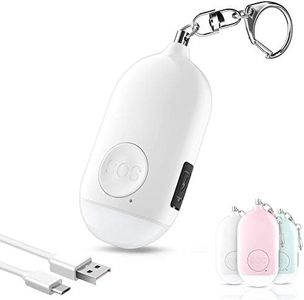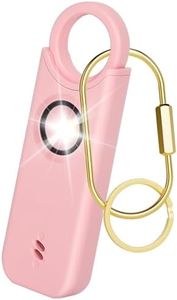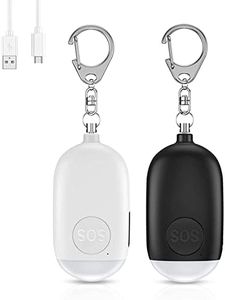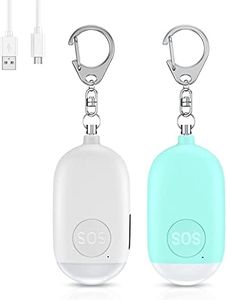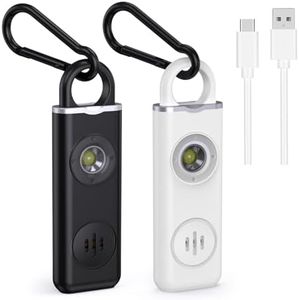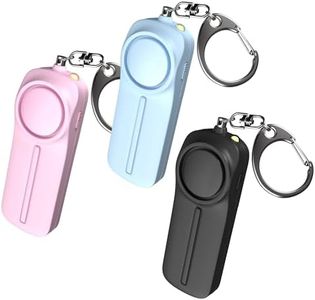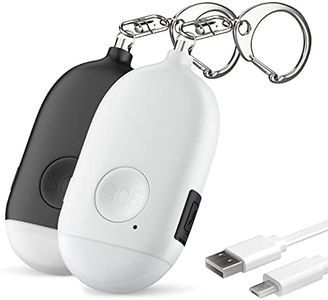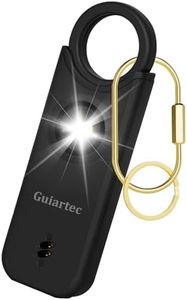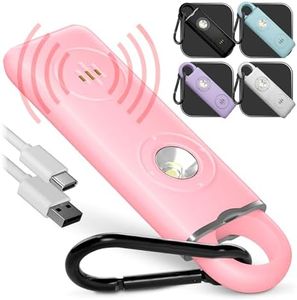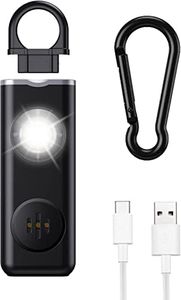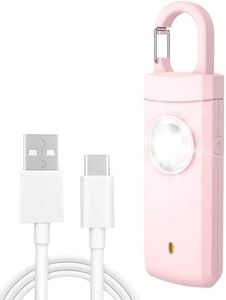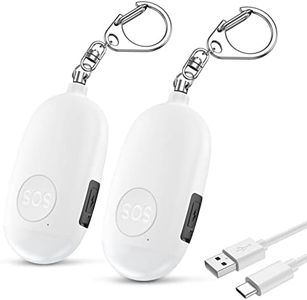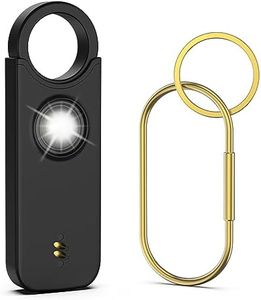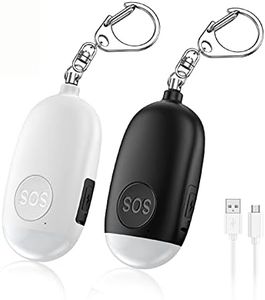We Use CookiesWe use cookies to enhance the security, performance,
functionality and for analytical and promotional activities. By continuing to browse this site you
are agreeing to our privacy policy
10 Best Personal Alarm For Women
From leading brands and best sellers available on the web.Buying Guide for the Best Personal Alarm For Women
Choosing a personal alarm for women involves understanding what features make it effective and reliable for personal safety. Personal alarms are designed to emit a loud sound that draws attention and deters attackers, giving you time to escape or get help. The key is to choose one that fits your lifestyle and comfort level, is easy to use under stress, and provides the level of security you feel confident with.Loudness (Decibel Level)Loudness refers to how powerful the alarm's sound is, usually measured in decibels (dB). It’s important because the louder the alarm, the more likely it is to attract attention and scare off potential threats. Alarms typically range from around 90dB to 140dB. Lower ends (90-110dB) are loud enough for confined spaces, but might be less effective in noisy outdoor situations. Mid-range (110-130dB) works well for most environments, striking a good balance between attention-grabbing and manageable sound. The highest (130-140dB) can be painfully loud and are most effective in outdoor or public settings, but might be too intense for sensitive ears. Consider where you’ll use the alarm most often and your comfort with loud sounds when making your choice.
Activation MethodThe activation method is how you trigger the alarm, such as pulling a pin, pressing a button, or squeezing the device. This is important because you need to be able to operate the alarm quickly and easily, especially in stressful situations. Pull-pin designs are simple and can be triggered by tugging, but may get accidentally set off if not handled carefully. Push-button types are more controlled but might take a second longer to find and press, especially in the dark or with gloves. Squeeze models are intuitive and quick, but could activate in your bag by mistake. Think about which method feels natural and secure in your hand, and test how easily you can activate it before choosing.
Size and PortabilitySize and portability refer to how small, lightweight, and easy the alarm is to carry or attach to personal items like keys, bags, or belts. It’s essential because the alarm should be convenient enough to keep with you all the time, without feeling bulky or drawing too much attention. Smaller alarms are easier to carry and more discreet but may have smaller batteries or less volume. Medium-sized devices usually balance easy handling and effective sound levels. Large personal alarms may double as flashlights or other tools but can be cumbersome. Match the size to your daily habits and pick one you can easily keep with you, ensuring you won’t leave it behind.
Battery Life and Power SourceBattery life and the type of power source determine how often you’ll need to recharge or replace batteries. This matter because you want your alarm to work reliably whenever you need it. Some alarms come with replaceable batteries, lasting from months to a year, while others have built-in rechargeable batteries needing occasional USB charging. Replaceable-battery alarms are great if you prefer not to deal with recharging, while rechargeable alarms are more convenient if you remember to top them up now and then. Consider your preference for maintenance and ensure the alarm you pick has an easy way to check if it’s still powered.
Additional FeaturesAdditional features can include built-in flashlights, strobe lights, or even phone connectivity. These extras matter if you want more utility from your personal alarm, such as lighting up dark areas or signaling for help visually as well as audibly. Simple alarms focus just on sound, which is usually enough for most users. Alarms with lights are good if you often walk in unlit places. Devices with connectivity features can notify contacts, but usually require setup and a smartphone. Think about your routines and decide if extra functions would add real value or just complicate usage.
